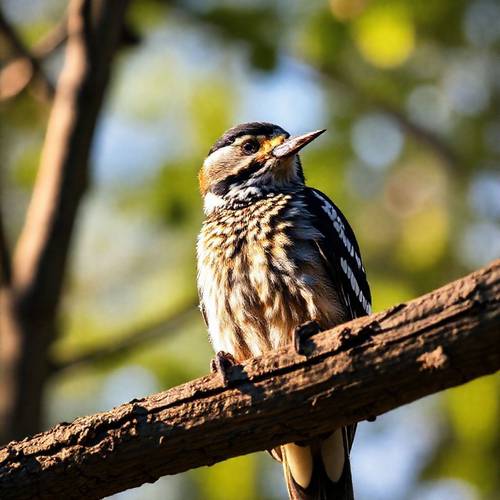Garden Birds: Who Are They?
Who hasn't marveled at the morning song of garden birds? These small winged visitors transform our green spaces into true living theaters. From the familiar robin hopping near the compost to the melodious blackbird perched on the gutter,chickadees , each species brings its own magic to our daily lives. This practical guide accompanies you in discovering these feathered companions: you will learn to recognize them, decode their habits, and create a welcoming environment to invite them durably to your home. Seeds, birdhouses, water points... discover all the secrets to make your garden a refuge appreciated by these wonderful garden birds.
Discover Common SpeciesPage Contents
The 12 Most Frequent Garden Visitors
These are the birds you are most likely to see at your feeder or hopping on your lawn. Learning to identify them is the first step into the wonderful world of birdwatching.

Swallow
A migratory bird heralding summer's arrival. They skillfully catch insects in flight and often nest in man-made structures like barns and sheds.

European Goldfinch
A small passerine with magnificent colors, it can be quite shy. It prefers perching in treetops, making it hard to see but often heard.

Green Woodpecker
This large, vibrantly colored woodpecker is easily recognized by its green upperparts, yellow rump, and striking red crown. It is often heard before it's seen, known for its loud, laughing "yaffle" call. Unlike many other woodpeckers, it spends much of its time foraging on the ground, primarily for ants.

Cuckoo
The Common Cuckoo is famous for its distinct "cuck-oo" call, an early sign of spring. This species is well-known for its brood parasitic behavior, where the female lays her eggs in the nests of other birds, leaving the foster parents to raise the Cuckoo chick.

European Starling
A social bird known for its vocal mimicry and large flocks. Their iridescent plumage is spectacular in good light.

Tit
Hyperactive and colorful, tits are frequent garden visitors. They readily use birdhouses and feeders, bringing life and activity to backyards.

House Sparrow
A stocky and very common bird in urban areas. This opportunistic seed-eater often approaches humans and squabbles in groups for food.

Chaffinch
A common passerine in cities and countryside. Its rattling song with a final flourish is a classic woodland sound.

Robin
Not very shy, this small bird with an orange breast is a favorite among gardeners. It often follows them, hoping to catch unearthed worms.

Blackbird
The male is all black with a yellow-orange beak, while the female is brown. Its rich, melodious song is a classic garden sound at dawn and dusk.

Thrush
With its speckled plumage, this bird is famous for its powerful, repetitive song, which it often sings from a high perch.

Collared Dove
Belonging to the pigeon and dove family, its gentle, repetitive cooing is a familiar sound in towns and gardens across the continent.
For the Attentive Observer: Other Garden Visitors
Our guide is growing! To help you identify every visitor, even the shyest, we are preparing new detailed profiles. Here are the birds that will soon join our garden encyclopedia:
How to Attract Birds to Your Garden?
Our Expert Tip
Dreaming of turning your garden into a paradise for birds and watching them up close? The secret is patience and a gentle approach! Avoid sudden movements that could startle them. The trick that works wonders: fill the feeder at the same time every day.
These little feathered friends are much smarter than you might think. They will quickly learn your routine and see that you are not a threat. Little by little, they will become less fearful and treat you to a true aerial ballet right before your eyes. It's pure joy!
Our 5 Key Tips for a Welcoming Garden:
- Set up feeders: Offering food is key. A platform or hanging feeder is ideal to start with.
- Choose the right food: Black-oil sunflower seeds, mixed seed blends, and suet cakes in winter are big hits. Also consider fresh fruits.
- Add a water source: A birdbath or a simple saucer filled with fresh water will allow birds to drink and bathe. Change the water regularly.
- Create a welcoming landscape: Plant shrubs and evergreen hedges to provide shelter and nesting sites. Absolutely avoid pesticides and chemicals.
- Be patient: It can take some time for birds to discover and adopt your garden as a safe place. Perseverance pays off!
Feeding Garden Birds: What You Need to Know
Providing appropriate food is essential for the health of birds. Seed mixes (sunflower, millet, peanut, rapeseed) offer a balanced diet. Fruits (apples, pears) and berries are also excellent sources of vitamins.
During the breeding season, insects, earthworms, and larvae are crucial. You can offer dried mealworms as a supplement. Place feeders in open areas, sheltered from predators like cats, and clean them every two weeks. Important: never give bread, milk, cheese, or salty foods, which are very harmful to birds.
How to Protect and Help Garden Birds?
Garden birds face many threats, but we can act to help them. Habitat loss due to urbanization is the main threat. Pollution from pesticides and predation, especially by domestic cats, also heavily impact their populations.
To protect them:
- Plant native species: Local trees, shrubs, and flowers provide food and shelter.
- Install birdhouses: Offer safe and protected nesting sites.
- Ban chemical products: Adopt natural gardening methods.
- Protect them from cats: Keep your cat indoors, especially at dawn and dusk, or equip it with a bell.
- Support conservation: Participate in bird counts and support nature protection organizations.